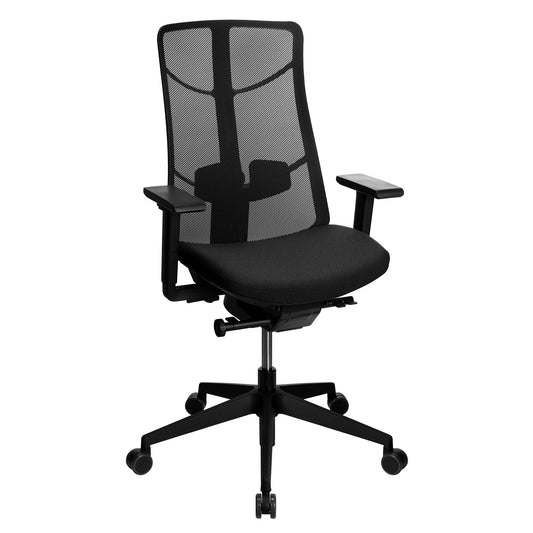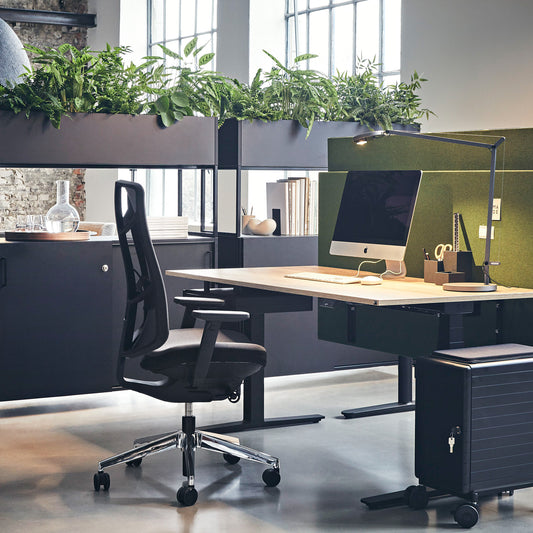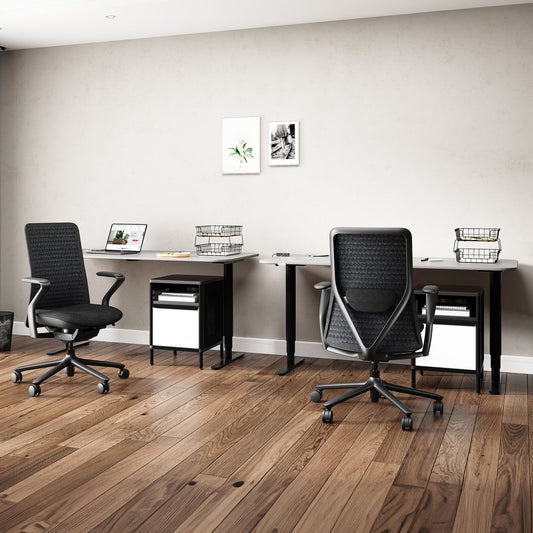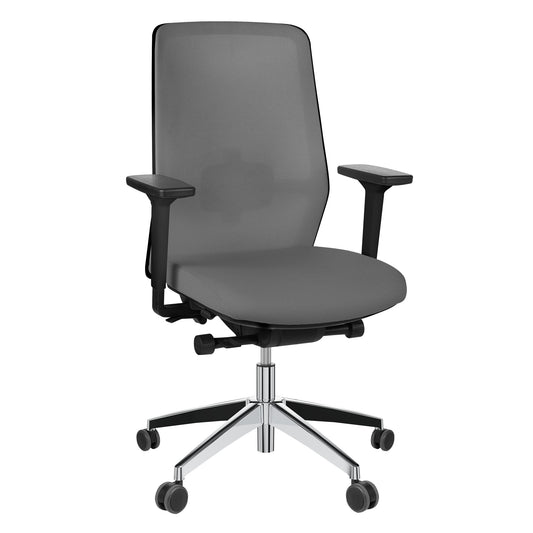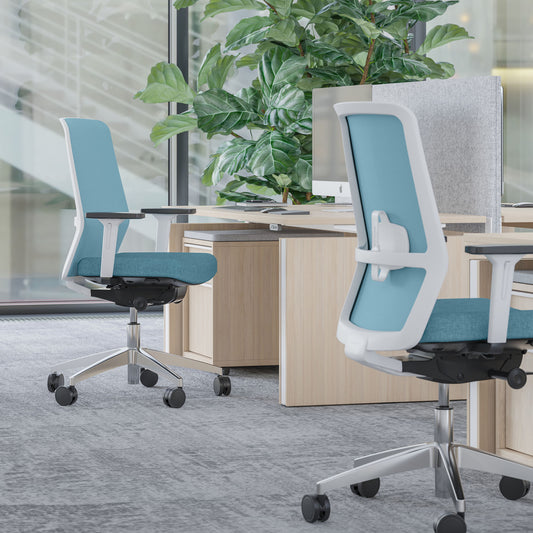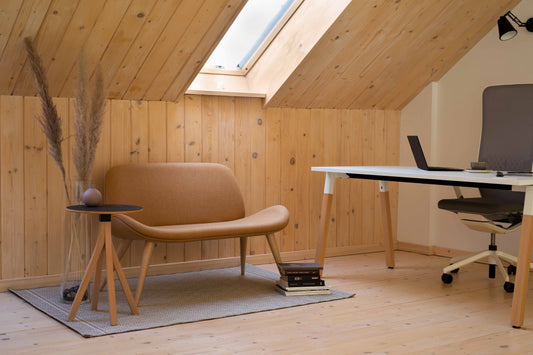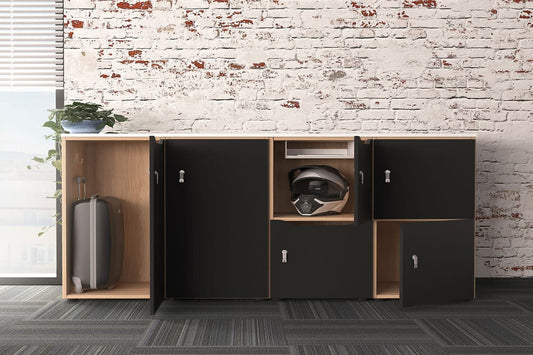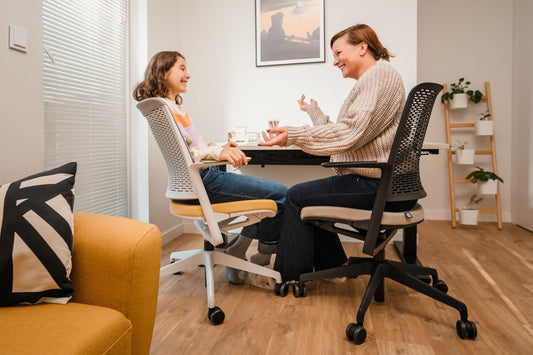Ergonomics and health | Reading time approx. 3 min 🕒
Bring swing to your working day: dynamic sitting
Sit dynamically? Yes that works! For everyone who sits often and for a long time in their everyday work, dynamic sitting is a real one Gamechanger - because it brings variety and movement to your desk. We will show you how you can integrate movement into your daily session with a few simple tips and tricks.
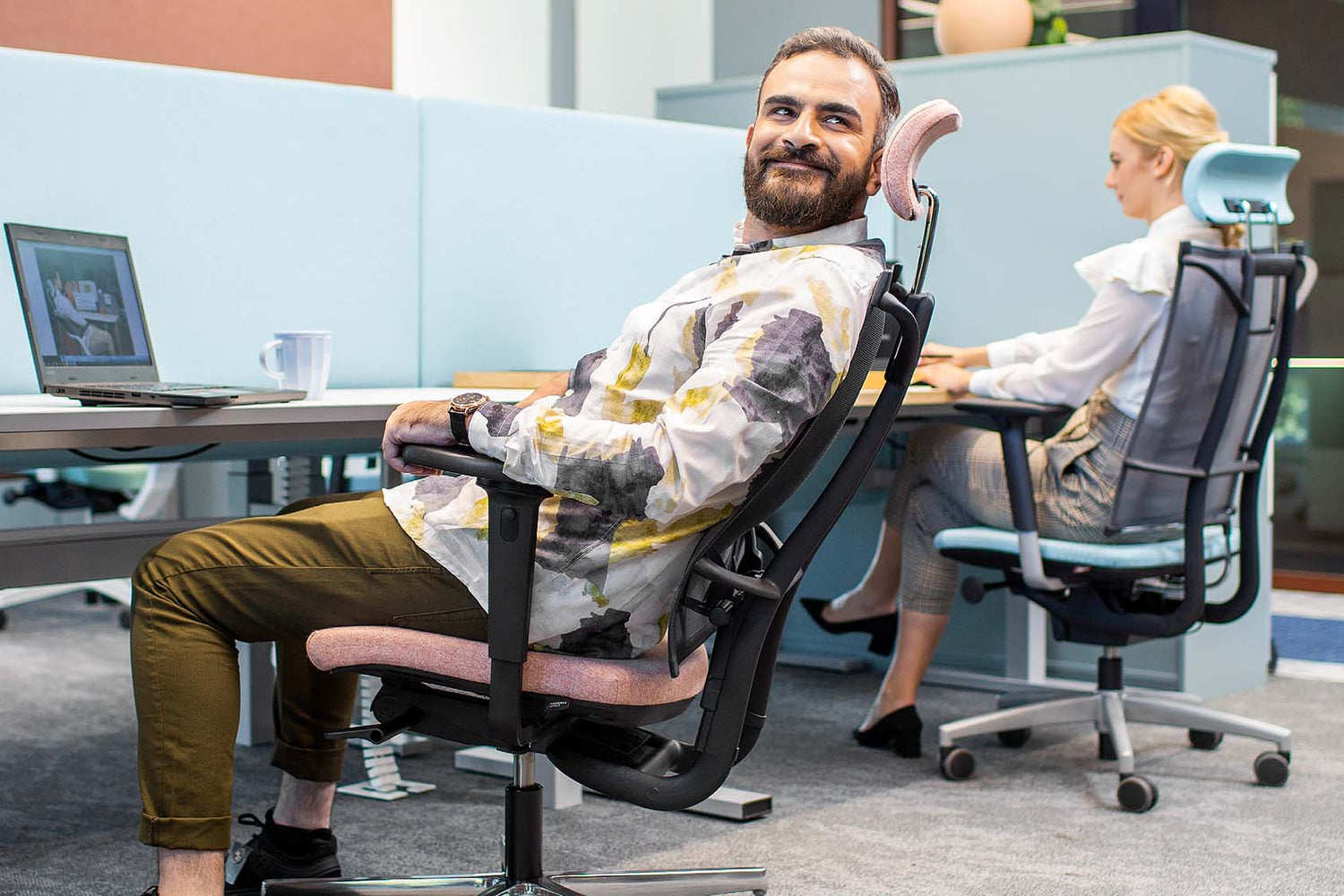
What is dynamic sitting?
First of all, you have to understand what the concept is all about: Dynamic sitting is that you approx. every 15 minutes should change your seating position or posture. Regardless of whether you have any routes, bend or the backrest, the goal is an active seating routine that ensures small movement units during the day. Dynamic sitting is the opposite of rigid seats that many employees consciously or unconsciously practice. Makes sense, right?
Advantages and disadvantages of dynamic sitting
So let's take a look at the advantages of an active seat routine. As with everything in life, there are of course a few disadvantages that we do not want to withhold from you. These usually only represent initial hurdles that you can master with a little patience and the right instructions.
-
Advantages
- Improved blood circulation and oxygen supply to the body and brain
- Increased ability to concentrate and general well -being
- Reduction of one -sided loads
- Prevention of back problems and tension
- Strengthening the muscles, especially back and abdominal muscles
- Suggestion of the metabolism and increased calorie consumption
-
Disadvantages
- Requires consciousness and discipline to change the seating position regularly
- Can lead to uncertainties as to which positions are healthy and how often it should be changed
- Not all office chairs optimally support dynamic sitting, which can make additional investments in ergonomic office furniture necessary
Overall, the long -term health and productivity -increasing advantages of dynamic sitting are much more extensive and weighty than the manageable and mostly only temporary disadvantages. So are you ready for a little momentum in your everyday work?
Tips & tricks for more movement in the office
The dynamic sitting can be easily implemented in everyday office life with some clever strategies. A proven approach is the so -called 40-15-5 rule. You design your working day so that you are active and dynamic for 40 minutes, followed by 15 minutes of work while standing - ideally on one height -adjustable desk -and conclude with a 5-minute movement break in which you walk around a little.
Use the flexibility of your backrest when actively sitting to switch between the front, medium and rear seating position:
- Front sitting position: Gently tend your upper body forward and, if necessary, use the forearms to support yourself on the desk.
- Medium sitting position: Keep a natural double S-shape of the spine and achieve an even strain on your muscles. Make sure that upper and forearms as well as upper and lower legs form a 90 ° angle and your feet have solid ground contact.
- Rear sitting position: Lean back relaxed and use the dynamic back of your chair to relieve your intervertebral discs.
You can also prevent tension with these short but effective exercises:
- Gentle naked stretch: Set upright, breathe in deeply, and gently tend your head to the right shoulder when exhaling. Keep this stretch for a few moments and feel the relaxation on the left side of your neck. Then return to the starting position and repeat the exercise to the left.
- Circling the shoulders: Place your hands relaxed on the thighs. Move the shoulders forward, lift them in breathing and lead them backwards in a circular movement. When exhaling, the shoulders drop again.
- Spine: Sit down, your feet firmly on the floor. Place your left hand on the right knee and the right hand behind your back. Turn your upper body gently to the right, look over your right shoulder and think this position is a few breaths. Then change the side.
- Activation of the leg and letters' muscles: Stretch one leg off and lift it a few centimeters from the floor. Keep this voltage for about 15 seconds and then change your leg. Add the getting muscles alternately and relax again.
Ergonomic essentials: everything you need for dynamic sitting in the office
The right office equipment helps you to integrate the concept of dynamic sitting into your everyday work. In particular play yours Office chair and desk an important role. At a ergonomic office chair the synchronous mechanism is of crucial importance because it promotes an active-healthy sitting. An individually adaptable lordosis support is also important, which supports the lumbar area and thus enables healthy sitting posture. Not to be forgotten are the triple adjustable armrests that contribute to relieving the shoulder and arm area, as well as a height and angle-adjustable neck support that supports the head and prevents headaches. Height -adjustable bar stools can be a pleasant change to the office chair.
The desk must also meet specific requirements. Individual height adjustability is essential to optimally adapt it to your body size and thus enable ergonomic work while standing and sitting. The operation should be carried out simply, quickly and as quietly as possible via a push of a button. A stable stability guarantees that you can also work safely even in the highest setting, while high resilience ensures that the desk can carry all the necessary work equipment such as screens, laptops and office materials without any problems. Additional functions such as the possibility of storing preferred working heights, memory functions for regular change of husbandry and a well thought-out cable management system complete the profile of an ideal, height-adjustable desk.
Isn't that enough for you yet? A few small ergonomic aids can also support dynamic sitting. A Orthopedic seat cushion Can offer essential support for an upright sitting posture by relieving the spine and at the same time strengthening the back muscles. A U-shaped pillow can remedy the situation, especially in the case of symptoms in the rushing leg area, and contribute to a more pain-free everyday work. If your desk is set too high, offer ergonomic Foot support An effective solution. They improve the overall attitude by enabling a comfortable and stable position for the feet. In addition, the use of a Gymnastics balls As an alternative to the conventional office chair, promote active sitting, strengthen the back muscles and at the same time train the balance. Balancing pillow Add the effect of active sitting. Their unstable surface forces the body into continuous small compensatory movements, which in particular effectively train the back and fuselage muscles and thus intensify dynamic sitting.
Stay dynamic!
Suitable office chairs
König + Neurath - JET.III office swivel chair
Mesh back, lumbar support, black
König + Neurath - JET.III office swivel chair
Soft padding, lumbar support, black
YUCAN office swivel chair
4D armrests, synchronous mechanism, optional headrest, black
profim - XENON 10 SFL NEXT office swivel chair
Lumbar support, black
POLY office swivel chair
Lumbar support, breathable 3D knit cover, coral
SURF office swivel chair
Synchronous mechanism, 3D armrests, black / coal black
profim - XENON 111 SFL Net office swivel chair
Lumbar support, mesh back, headrest, black

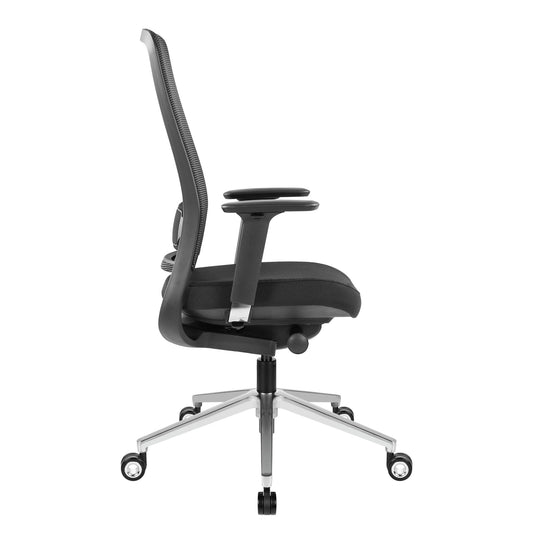
FILO-B 2.0 office swivel chair
Lumbar vertebrae lordosis, network back, black
Trending magazine articles
-
Raumgestaltung und Arbeitsplatzoptimierung
Skandinavisches Design im Büro
-
Product Consultation
Lockers in the office
-
Ergonomie und Gesundheit
Proper seating in the office



